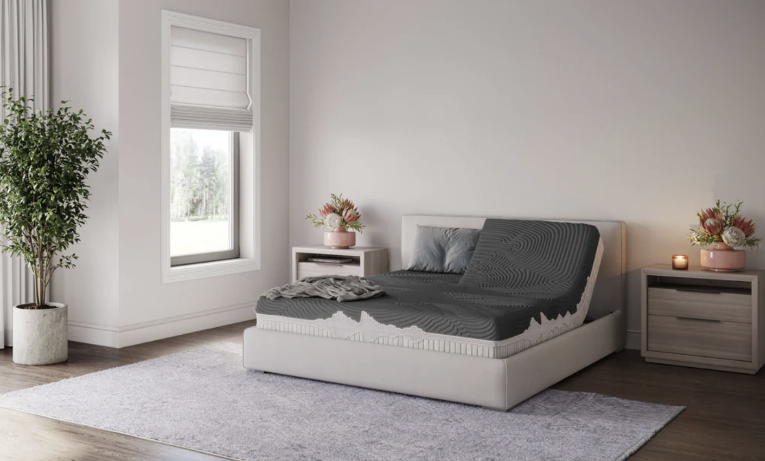How The Right Mattress Can Help New Parents Transition To Life With A Newborn With Less Stress
Becoming a parent is one of life’s most exciting, yet challenging, transitions. Between sleepless nights, feeding schedules, and the constant demands of a newborn, it can be difficult to find moments of rest. However, one of the most important aspects of navigating this new chapter is ensuring that you, as a parent, are well-rested and rejuvenated. The right mattress can be a game-changer, offering the support, comfort, and relaxation you need during this busy time. New innovative options include the use of audio-haptic technology that promotes deeper rest and stress relief, creating a sleep sanctuary is easier than ever. With a product like GoodVibeSleep, new parents can integrate these benefits into their nightly routine, making the transition into parenthood a little smoother.
Audio-haptic Technology Explained: Feel what you hear
Audio-haptic technology combines soothing soundscapes with gentle vibrations to create a multisensory sleep experience that deeply relaxes both body and mind. For new parents, this can be particularly beneficial, as the constant demands of caring for a newborn often lead to disrupted sleep and heightened stress levels. Audio-haptic feedback works by engaging the body’s natural response to vibration, helping to reduce tension and promote a sense of calm, which can make falling back to sleep easier after nighttime feedings or diaper changes. By harmonizing sound and touch, audio-haptic technology provides a more immersive and restful sleep environment, allowing parents to recharge more effectively.
In addition to promoting relaxation, audio-haptic technology can help new parents manage the emotional and mental toll that often accompanies sleep deprivation. The soothing vibrations can assist in lowering stress levels and improving mood, giving parents a much-needed break from the overwhelming emotions that come with caring for a newborn. This deeper, more restorative rest helps parents wake up feeling more refreshed, better able to manage the challenges of parenthood, and more present for their little ones.
Photo: GoodVibeSleep
The Growing Popularity of White Noise and Haptic Technology for Sleep
As white noise machines continue to gain popularity for their ability to drown out disruptive sounds and create a calming environment, audio-haptic technology is emerging as the next step in enhancing sleep quality. While white noise helps block external noise by emitting consistent background sounds, audio-haptic technology goes a step further by integrating soothing vibrations that harmonize with the audio. This multisensory experience offers deeper relaxation, engaging not only the ears but the body as well, making it an ideal solution for new parents dealing with restless nights.
For parents who rely on white noise machines to help their babies—and themselves—sleep more soundly, incorporating audio-haptic feedback into their routine can further elevate the calming effects. By adding gentle vibrations that sync with calming soundscapes, products like GoodVibeSleep create a holistic sleep environment that promotes relaxation and stress relief. This combination can help parents fall asleep faster, stay asleep longer, and wake up feeling more rejuvenated, ultimately making those nighttime wake-ups with their baby a little less exhausting.
Cognitive and Emotional Benefits of Haptic Beats for Parents
For new and expecting parents, managing stress, sleep deprivation, and emotional exhaustion can be incredibly challenging. This is where the cognitive and emotional benefits of haptic beats can make a meaningful difference. Haptic beats create a multisensory experience that goes beyond just listening to sound by incorporating gentle, rhythmic vibrations that the body can physically feel. This integration of auditory and tactile stimuli helps to engage both the mind and body in a more immersive way, offering emotional relief and mental clarity when it’s needed most.
According to research published in PLOS ONE, multisensory integration—like the combination of sound and haptic feedback—can enhance emotional processing and cognitive engagement. This means that the experience of feeling sound, rather than just hearing it, can help parents manage emotional stress, improve mood, and sharpen cognitive function. By activating multiple senses simultaneously, haptic beats can help busy parents become more present, lower their stress levels, and experience moments of calm amidst the demands of caring for a newborn. This enhanced sensory perception leads to greater overall enjoyment of daily routines and can contribute to improved emotional balance, allowing parents to be more resilient and patient during one of the most demanding times of their lives


